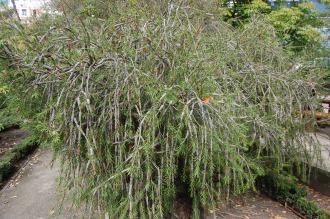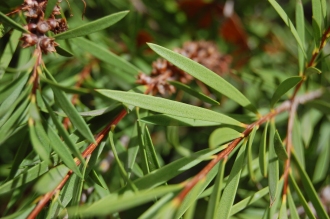Position: Full sun to light shade
Flowering period: Summer
Soil: Moist, well drained
Eventual Height: 1.5m
Eventual Spread: 1m
Hardiness: 7b, 8a, 8b, 9a, 9b, 10a
Family: Myrtaceae
Ugni molinae is an evergreen shrub with a bushy habit. Its dark green glossy leaves are ovate with entire margins, up to 2cm long and 15mm across. Its white/ pale pink pendulous flowers are up to 1cm across. Its red/ purple fruit is a berry and up to 1cm across, these are commonly known as Ungni Berry or New Zealand Cranberry.
Ugni molinae, commonly known as Chilean Guava or Strawberry Myrtle, is native to Chile and south Argentina. In its native habitat it grows in the temperate rain forests of Chile and Argentina at woodland edges.
The etymological root of the binomial name Ugni is derived from the vanacular Chilean name for this plant. Molinae is named after Juan I Molina (1740 – 1829).
The landscape architect may find Ugni molinae useful as an evergreen shrub with attractive flowers and edible fruit. This is a suitable shrub for growing in a community type garden. It may also be grown as an evergreen hedging species. Once established this shrub is drought tollerant.
Ecologically, Ugni molinae flowers are attractive to pollinating insects, including bees. Its berries are attractive to birds and mammals (including humans).
Ugni molinae prefers moist, fertile, well-drained soils. It tolerates most pH of soil.
Ugni molinae requires little maintenance. Pruning may be carried out any time of year, however this may be at the expense of the flowers and fruit.
![]()
Landscape Architecture













